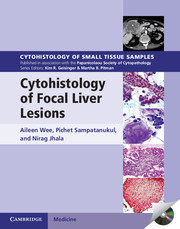Book contents
- Frontmatter
- Dedication
- Contents
- CONTRIBUTING AUTHOR
- Preface
- 1 The focal liver lesion: general considerations
- 2 Morphologic approach
- 3 Diagnostic algorithm
- 4 Focal liver lesions with low or no suspicion of malignancy
- 5 Focal liver lesions suspicious of hepatocellular carcinoma
- 6 Focal liver lesions suspicious of intrahepatic cholangiocarcinoma
- 7 Focal liver lesions from metastases and other malignancies
- 8 Focal liver lesions with cystic appearance
- 9 Focal liver lesions in infants and children
- 10 Ancillary studies
- 11 Techniques and technology in practice
- Index
3 - Diagnostic algorithm
Published online by Cambridge University Press: 05 April 2015
- Frontmatter
- Dedication
- Contents
- CONTRIBUTING AUTHOR
- Preface
- 1 The focal liver lesion: general considerations
- 2 Morphologic approach
- 3 Diagnostic algorithm
- 4 Focal liver lesions with low or no suspicion of malignancy
- 5 Focal liver lesions suspicious of hepatocellular carcinoma
- 6 Focal liver lesions suspicious of intrahepatic cholangiocarcinoma
- 7 Focal liver lesions from metastases and other malignancies
- 8 Focal liver lesions with cystic appearance
- 9 Focal liver lesions in infants and children
- 10 Ancillary studies
- 11 Techniques and technology in practice
- Index
Summary
INTRODUCTION
An integrative approach to the evaluation of any cytohistology sample is feasible under ideal circumstances, such as in a hospital environment. More often than not, pathologists attached to central laboratories or small practices work in virtual isolation with a dearth of clinical information. Their diagnostic acumen, experience, and conviction are frequently put to the test. An unbiased morphologic assessment is the best initial approach regardless of situation.
INTEGRATIVE APPROACH
The diagnostic algorithm consists of five steps.
Step 1: Evaluate clinical information
Important data for assigning patients into common clinical settings include age, gender, race, occupation, country/area of abode, clinical history, physical findings, liver function profile, viral serology tests, and tumor markers. Family and social history, lifestyle, and medication/drug information are also relevant.
There are several prototypical clinical settings:
(i) Asymptomatic patients with incidental lesions detected on routine health screening: Abnormal liver function tests may be the first indication of liver pathology, prompting further investigations. Most incidentally detected lesions are small with low to no apparent suspicion of malignancy. Occasionally, a more sinister condition, including metastases, may be detected. If the non-aggressive nature of the lesion can be established clinically and radiologically, then there is no real indication for biopsy.
(ii) High-risk patients with advanced chronic liver disease on regular ultrasound surveillance and serum α-fetoprotein estimation: Ultrasound surveillance of patients with cirrhosis due to hepatitis B and C is performed on a 6-monthly to yearly basis for early detection of hepatocellular carcinoma (HCC) in some parts of the world. Advances in imaging modalities have led to increasing numbers of progressively smaller nodules being detected. Such small hepatocellular nodules (≤2cm in size) do not generally portray any characteristic imaging features. Serum α-fetoprotein (AFP) is not a reliable marker for screening or surveillance purposes as the sensitivity is around 40%; hence, the need for newer and better serum biomarkers. The dilemma then is to decide whether to subject the patient to biopsy or to imaging follow-up.
[…]
- Type
- Chapter
- Information
- Cytohistology of Focal Liver Lesions , pp. 60 - 65Publisher: Cambridge University PressPrint publication year: 2000

